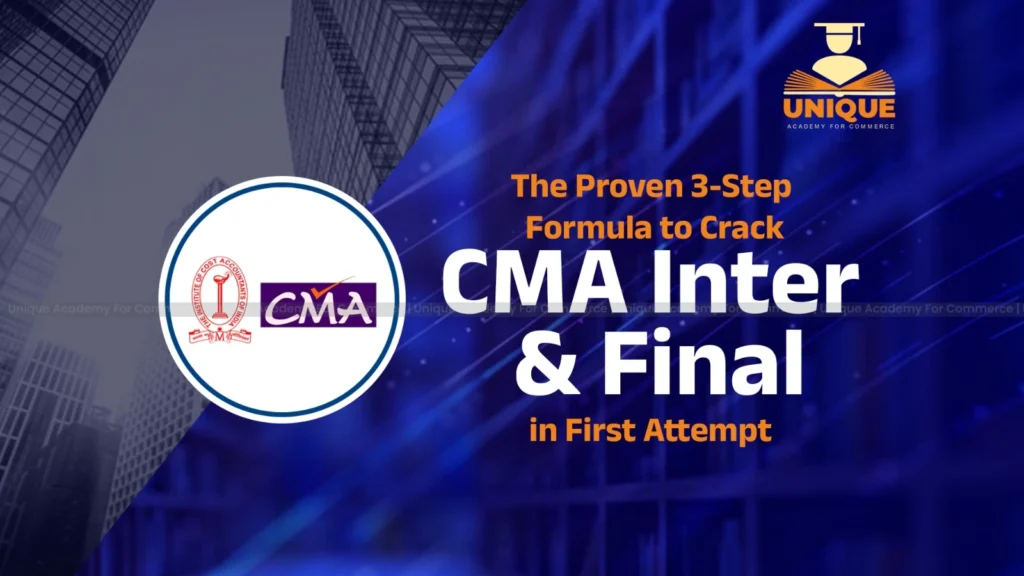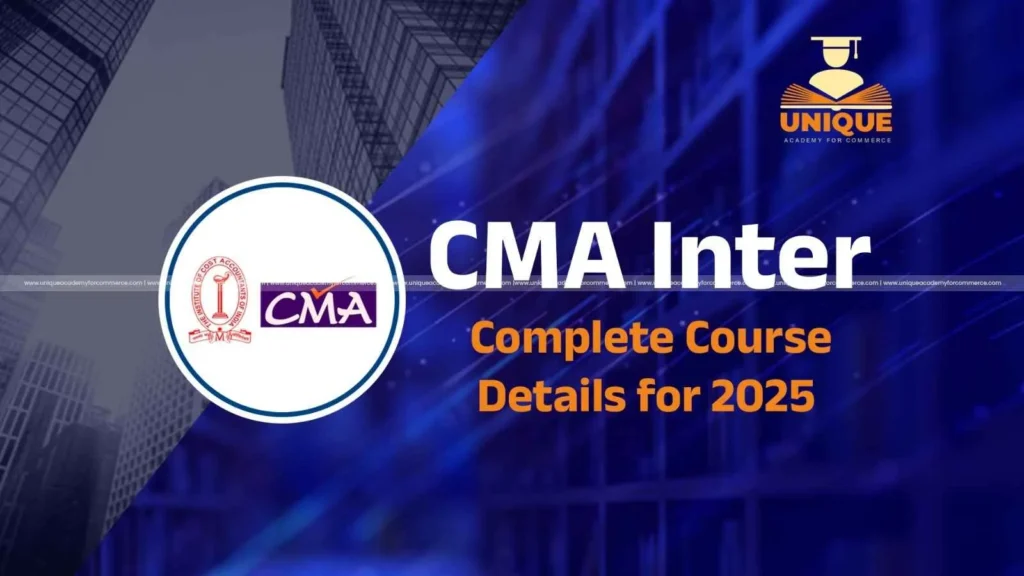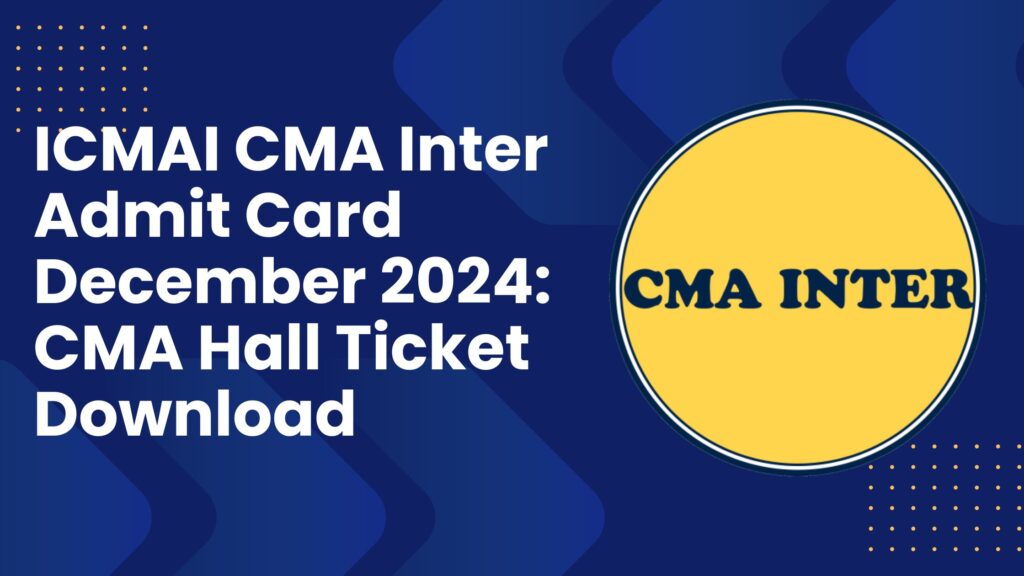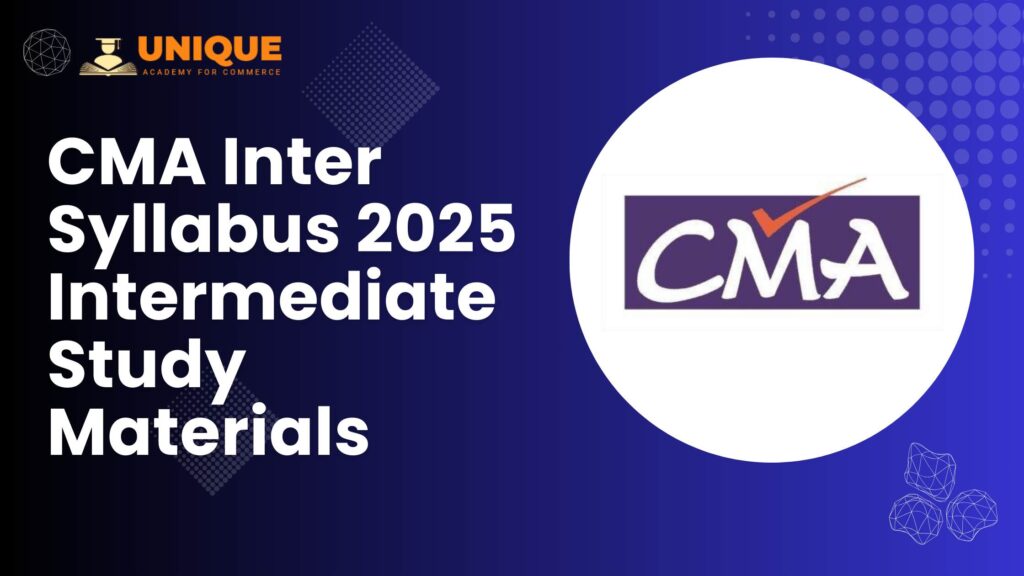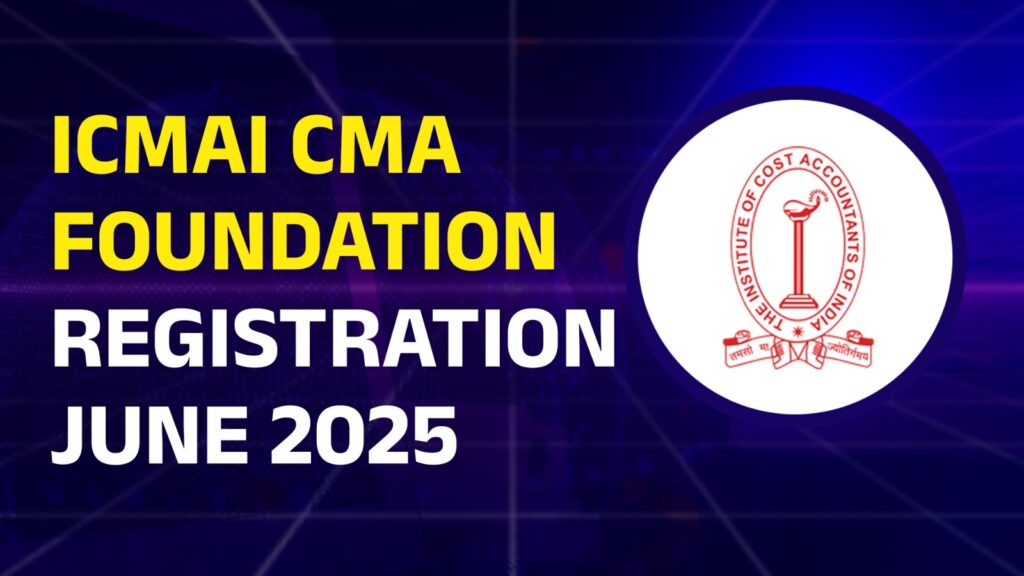Is the CMA Foundation Exam tough?

CMA Foundation is the qualifying entrance test for registration to the Cost Accountancy Course. It’s a national level examination.
Students are more inclined in understanding the concepts of costing and management accounting and applying them in the practical work of the field, they usually opt for this course instead of Company Secretary or Chartered Accountancy Course.
The different stages of examination includes the following-
- Foundation Programme
- CMA Intermediate Programme
- CMA Final Programme
Eligibility Criteria (excluding exemptions)
| Eligibility for Admission: | |
| (a) | A candidate should have passed Class 10 or equivalent from a recognized Board or Institution. |
| (b) | Passed Senior Secondary Examination under 10+2 scheme of a recognized Board or an Examination recognized by the Central Government as equivalent thereto or has passed National Diploma in Commerce Examination held by the All India Council for Technical Education or any State Board of Technical Education under the authority of the said All India Council, or the Diploma in Rural Service Examination conducted by the National Council of Higher Education. Incumbents waiting for the result can apply for provisional admission |
Admission to foundation course for the ICAI course is open throughout the year However, Students desirous to appear for June Term Examination should apply before 31st January of that year and for December Term Examination should apply before 31st July of that year.
Passing Criteria for clearance
- The Institute has introduced the MCQ-OMR sheet Centre based offline Foundation examination-June 2023 term.
- Each paper will carry 100 marks with 50 Multiple Choice Questions
(Each Question will carry 2 Marks).
- Follow the Syllabus and the specific chapter wise weightage given in
the Syllabus 2016 and Syllabus 2022
- Session I will be of 200 marks consisting of Paper I (50 questions *2
marks=100 Marks) and Paper II (50 questions *2 marks=100 Marks).
- Session II- Paper III (50 questions *2 marks=100 Marks) and paper IV
(50 questions *2 marks=100 Marks).
- There is No negative marking in the Foundation Examination.
But are we really prepared to crack this exam?
This exam being one of the most important exam for entering into this course of such a prestigious Institute of India. Hence this requires adequate preparation, learning and planning.
The students are required to plan the study in such a manner that the goal can be achieved and they should be able to crack this in 1st attempt itself.
Following challenges faced by students preparing for CMA Foundation Exam
- Improper timetable i.e not allotting required time for each subject which is required to be made
- Not giving complete and primary focus on the institute’s study material
- Frequent and proper revision of the entire syllabus at least 3-4 times is a must, which is not done usually by the students
- Not having habits and practice of making summary notes for all the subjects for quick revision
- Practice a lot of MCQs to maintain speed and accuracy for the objective type question papers which is usually taken very lightly by the students
- Regular practice of attempting Previous Year Question Papers will help in analyzing the trend of Examination, which gets ignored by students
Following methodology is suggested for achieving the passing criteria and cracking the exam
- Understanding the Syllabus
- Making a Study Plan
- Start with a proper Time Table
- Journals and Bulleteins released by ICAI
- Books
- Attending Classes
- Giving Tests periodically
- Self Practice
Study Plan for CMA Foundation Examination
1. Ensure complete understanding of the CMA foundation Study Material
The Institute provides study material for the candidates preparing for CMA Foundation exam. Go through those study materials along with some reference books as recommended by experts. Conceptual understanding and correlations among various topics are the best strategies you can adopt while preparing for theoretical topics because everything is correlated. Don’t focus on memorizing, but understanding and analyzing the topic.
2. Practice of making notes
While studying the chapters make short and handy notes of the topics. This will not only help in noting down the important points but also help in remembering the topics for the future. Keep a small notebook handy while studying a new chapter. Focus on writing for theoretical subjects. It will not only improve the writing speed but also help remember the topics easily. Practice as much as you can before the exams, do the writing instead of just learning formulas.
3. Start with a proper Time Table
Prepare a timetable or study routine so that all the CMA Syllabus is covered within a given time period. It is necessary to dedicate most of the time to CMA exam preparation. The aim should be to complete one chapter at a time. After doing that, refer to the practice manual, scanner, and gauge if the coverage is maximum.
Time tables can be made on a weekly or monthly basis with breakups in between.
4. Setting targets
Set targets for a day that is achievable. Do not set such targets which are impossible to achieve. It will only lead to exam burden and not help in any way. Aspirants must try to finish the entire syllabus at least three months before the main exam. One and a half months should be dedicated for revision. During the revision phase-only go through the previous chapters which are completed, and focus on improving the weaknesses
5. Analysing the actual performance very week
Analyze every week’s target and check if there are any backlogs. Monitor the effort put in and revise the schedule accordingly.
6. Never Do following-
- Never go with selective topics, go through each and every concepts and chapter thoroughly.
- Never refer old study material. Before every attempt, you can find all the supplements, practice paper, CMA Study Material, amendment of all sorts in every subject
- Try to finish your revision beforehand, do not leave anything undone or partly done. Time management is the key.
Syllabus – Foundation Course Curriculum
PAPER 1: FUNDAMENTALS OF BUSINESS LAWS AND BUSINESS COMMUNICATION (FBLC)
PAPER 2: FUNDAMENTALS OF FINANCIAL AND COST ACCOUNTING (FFCA)
PAPER 3: FUNDAMENTALS OF BUSINESS MATHEMATICS AND STATISTICS (FBMS)
PAPER 4: FUNDAMENTALS OF BUSINESS ECONOMICS AND MANAGEMENT (FBEM)
Marks weightage of the four subjects
| Subject | Marks |
| PAPER 1: FUNDAMENTALS OF BUSINESS LAWS AND BUSINESS COMMUNICATION (FBLC) | 100 |
| PAPER 2: FUNDAMENTALS OF FINANCIAL AND COST ACCOUNTING (FFCA | 100 |
| PAPER 3: FUNDAMENTALS OF BUSINESS MATHEMATICS AND STATISTICS (FBMS) | 100 |
| PAPER 4: FUNDAMENTALS OF BUSINESS ECONOMICS AND MANAGEMENT (FBEM) | 100 |
Paper 1- FUNDAMENTALS OF BUSINESS LAWS AND BUSINESS COMMUNICATION (FBLC)
| Module no | Module Description | Weight |
| Section A: Fundamentals of Business Laws 80% | ||
| 1 | Introduction | 10% |
| 2 | Indian Contracts Act, 1872 | 30% |
| 3 | Sale of Goods Act, 1930 | 20% |
| 4 | Negotiable Instruments Act,1881 | 20% |
| Section B: Business Communication 20% | ||
| 5 | Business Communication | 20% |
Paper 2 FUNDAMENTALS OF FINANCIAL AND COST ACCOUNTING (FFCA)
| Module no | Module Description | Weight |
| Section A: Fundamentals of Financial Accounting 70% | ||
| 1 | Accounting Fundamentals | 30% |
| 2 | Accounting for Special Transactions | 15% |
| 3 | Preparation of Final Accounts | 25% |
| Section B: Fundamentals of Cost Accounting 30% | ||
| 4 | Fundamentals of Cost Accounting | 30% |
Paper 3 FUNDAMENTALS OF BUSINESS MATHEMATICS AND
STATISTICS (FBMS)
| Module no | Module Description | Weight |
| Section A: Fundamentals of Business Mathematics 40% | ||
| 1 | Arithmetic | 15% |
| 2 | Algebra | 20% |
| 3 | Calculus- Application in Business | 05% |
| Section B: Fundamentals of Business Statistics 60% | ||
| 4 | Statistical Representation of Data | 05% |
| 5 | Measures of Central Tendency and Dispersion | 15% |
| 6 | Correlation and Regression | 15% |
| 7 | Probability | 15% |
| 8 | Index Numbers and Time Series | 10% |
Paper 4 FUNDAMENTALS OF BUSINESS ECONOMICS AND MANAGEMENT (FBEM)
| Module no | Module Description | Weight |
| Section A: Fundamentals of Business Economics 70% | ||
| 1 | Basic Concepts | 15% |
| 2 | Forms of Market | 20% |
| 3 | Money and Banking | 20% |
| 4 | Economic and Business Environment | 15% |
| Section B: Fundamentals of Management 30% | ||
| 5 | Fundamentals of Management | 30% |
Understanding Syllabus of CMA Foundation
The Institute has prescribed detailed syllabus w.r.t. each paper and content which will be part of the test. Following are the topics and subjects which are required to be part of the test.
Students are expected to understand and have a proper grip on the topics. A proper SWOT analysis should be done by the students w.r.t. topics. The focus should be more on the topics/ subjects which seems tough or difficult for them.
| FUNDAMENTALS OF BUSINESS LAWS ANDBUSINESS COMMUNICATION (FBLC) | |
| SECTION A: FUNDAMENTALS OF BUSINESS LAWS | Introduction1.1 Sources of Law1.2 Legislative Process in India1.3 Legal Methods and Court System in India1.4 Primary and Subordinate Legislation Indian Contracts Act, 18722.1 Essential Elements of a Contract, Offer and Acceptance2.2 Void and Voidable Agreements, No Consideration No Contract2.3 Consideration, Legality of Object and Consideration2.4 Capacity of Parties, Free Consent2.5 Contingent Contracts2.6 Performance of Contracts2.7 Meaning of Indemnity, Guarantee, Pledge, Agent2.8 E-Contracts and E-Signature – Meanings and Requirements2.9 Discharge of Contracts2.10 Breach of Contract and Remedies for Breach of Contract Sale of Goods Act, 19303.1. Definition3.2. Transfer of Ownership3.3. Essential Conditions of a Contract of Sale3.4. Conditions and Warranties3.5. Performance of the Contract of Sale3.6. Rights of Unpaid Seller Negotiable Instruments Act, 18814.1. Characteristics of Negotiable Instruments4.2. Definitions of Promissory Note, Bill of Exchange and Cheque4.3. Difference between Promissory Note, Bill of Exchange and Cheque4.4. Crossing – Meaning, Definition and Types of Crossing4.5. Dishonour of Cheques (Section 138) |
| SECTION B: BUSINESS COMMUNICATION | Business Communication5.1 Introduction to Business Communication5.2 Features of Effective Business Communication5.3 Process of Communication5.4 Types of Business Communication5.4.1 Formal and Informal Communication5.4.2 Written, Verbal and Non-verbal Communication5.4.3 Vertical, Horizontal and Diagonal Communication5.4.4 Upward and Downward Communication5.5 Internet-based Business Communication5.6 Do’s and Don’ts of Communication through Social Media5.7 Writing and Drafting for Business Audiences5.7.1 Letter and Memorandum5.7.2 Report – Formal and Informal5.7.3 Business Proposal5.7.4 Enhancement of Writing Skills5.8 Intercultural and International Business Communication5.9 Barriers to Business Communication5.10 Legal Aspects of Business Communication5.11 Use of Graphics and References for Business Communication |
| FUNDAMENTALS OF FINANCIAL ANDCOST ACCOUNTING (FFCA) | |
| SECTION A: FUNDAMENTALS OF FINANCIAL ACCOUNTING | Accounting Fundamentals1.1 Understanding of Four Frameworks of Accounting (Conceptual, Legal, Institutional andRegulatory) and Forms of Organization1.2 Accounting Principles, Concepts and Conventions1.3 Capital and Revenue Transactions – Capital and Revenue Expenditures, Capital and RevenueReceipts1.4 Accounting Cycle – Charts of Accounts and Codification Structure, Analysis of Transaction –Accounting Equation, Double Entry System, Books of Original Entry, Subsidiary Books andFinalisation of Accounts1.5 Journal (Day Books; Journal Proper – Opening, Transfer, Closing, Adjustment and RectificationEntries), Ledger1.6 Cash Book, Bank Book, Petty Cash Book, Bank Reconciliation Statement1.7 Trial Balance1.8 Adjustment Entries and Rectification of Errors 1.9 Depreciation (Straight Line and Diminishing Balance Methods only) 1.10 Accounting Treatment of Bad Debts and Provision for Doubtful Debts Accounting for Special Transactions2.1 Consignment2.2 Joint Venture2.3 Bills of Exchange (excluding Accommodation Bill, Insolvency) Preparation of Final Accounts3.1 Preparation of Financial Statements of Sole Proprietorship3.1.1 Income Statement, Balance Sheet3.2 Preparation of Financial Statements of a Not-for-Profit Organisation3.2.1 Preparation of Receipts and Payments Account3.2.2 Preparation of Income and Expenditure Account3.2.3 Preparation of Balance Sheet |
| SECTION B: FUNDAMENTALS OF COST ACCOUNTING | Fundamentals of Cost Accounting4.1 Meaning, Definition, Significance of Cost Accounting, its Relationship with Financial Accounting4.2 Application of Cost Accounting for Business Decisions4.3 Definition of Cost, Cost Centre, Cost Unit and Cost Drivers4.4 Classification of Costs (with reference to Cost Accounting Standard 1)4.5 Ascertainment of Cost and Preparation of Statement of Cost and Profit (Cost Sheet) |
| FUNDAMENTALS OF BUSINESS MATHEMATICS ANDSTATISTICS (FBMS) | |
| SECTION A: FUNDAMENTALS OF BUSINESS MATHEMATICS | 1. Arithmetic1.1 Ratios, Variations and Proportions1.2 Time Value of Money and Annuity – Simple and Compound Interest1.3 Arithmetic Progression and Geometric Progression1.4 Time and Distance 2. Algebra2.1 Set Theory, including Venn Diagram2.2 Indices and Logarithms (Basic Concepts)2.3 Permutation and Combinations (Basic Concepts)2.4 Quadratic Equations (Basic Concepts) 3. Calculus – Application in Business3.1 Concept of Calculus and its Application in Business3.2 Revenue and Cost Function3.3 Optimisation Techniques (Basic Concepts) |
| SECTION B: FUNDAMENTALS OF BUSINESS STATISTICS | 4. Statistical Representation of Data4.1 Diagrammatic Representation of Data4.2 Frequency Distribution4.3 Graphical Representation of Frequency Distribution – Histogram, Frequency Polygon Curve,Ogive, Pie-chart 5. Measures of Central Tendency and Dispersion5.1 Mean, Median, Mode, Mean Deviation5.2 Range, Quartiles and Quartile Deviation5.3 Standard Deviation5.4 Co-efficient of Variation5.5 Karl Pearson and Bowley’s Co-efficient of Skewness6. Correlation and Regression6.1 Scatter Diagram6.2 Karl Pearson’s Co-efficient of Correlation6.3 Regression Analysis 7. Probability7.1 Concepts and Terminologies7.2 Primary applications of Probability Theorems 8. Index Numbers and Time Series8.1 Uses of Index Numbers, Methods of Construction of Index Number8.2 Components of Time Series and Calculation of Trend by Moving Average Method |
| FUNDAMENTALS OF BUSINESS ECONOMICS ANDMANAGEMENT (FBEM) | |
| SECTION A: FUNDAMENTALS OF BUSINESS ECONOMICS | 1. Basic Concepts1.1 The Fundamentals of Economics1.2 Utility, Wealth, Production1.3 Theory of Demand (Meaning, Determinants of Demand, Law of Demand, Elasticity of Demand- Price, Income and Cross Elasticity, Theory of Consumer Behaviour, Demand Forecasting) andSupply (Meaning, Determinants, Law of Supply and Elasticity of Supply), Equilibrium1.4 Theory of Production (Meaning, Factors, Laws of Production – Law of Variable Proportion, Lawsof Returns to Scale)1.5 Cost of Production (Concept of Costs, Short-run and Long-run Costs, Average and Marginal Costs,Total, Fixed and Variable Costs)1.6 Means of Production 2. Forms of Market2.1 Pricing of Products and Services in Various Forms of Markets – Perfect Competition, Duopoly,Oligopoly, Monopoly, Monopolistic Competition 2.2 Price Discrimination 3. Money and Banking3.1 Money – Types, Features and Functions3.2 Banking – Definition, Functions, Utility, Principles3.3 Commercial Banks, Central Bank3.4 Measures of Credit Control and Money Market 4. Economic and Business Environment4.1 PESTEL (Political, Economic, Societal, Technological and Legal) Analysis4.2 Emerging Dimensions of VUCAFU (Volatility, Uncertainty, Complexity, Ambiguity, Fear of Unknown and Unprecedentedness) |
| SECTION B – FUNDAMENTALS OF MANAGEMENT | 5. Fundamentals of Management5.1 Introduction to Management5.2 Stewardship Theory and Agency Theory of Management5.3 Planning, Organizing, Staffing and Leading5.4 Communication, Co-ordination, Collaboration, Monitoring and Control5.5 Organisation Structure, Responsibility, Accountability and Delegation of Authority5.6 Leadership and Motivation – Concepts and Theories5.7 Decision-making – Types and Process |





